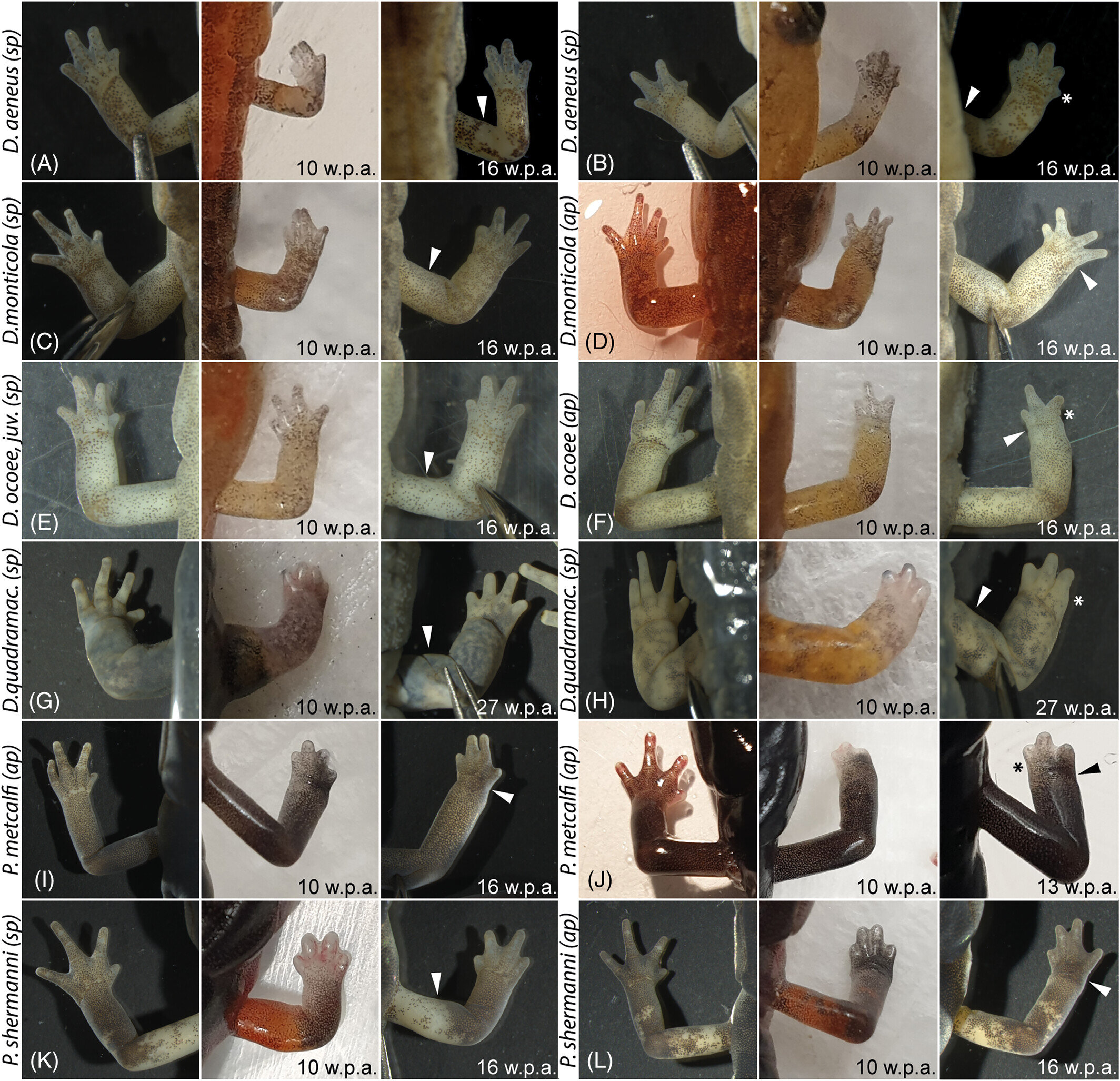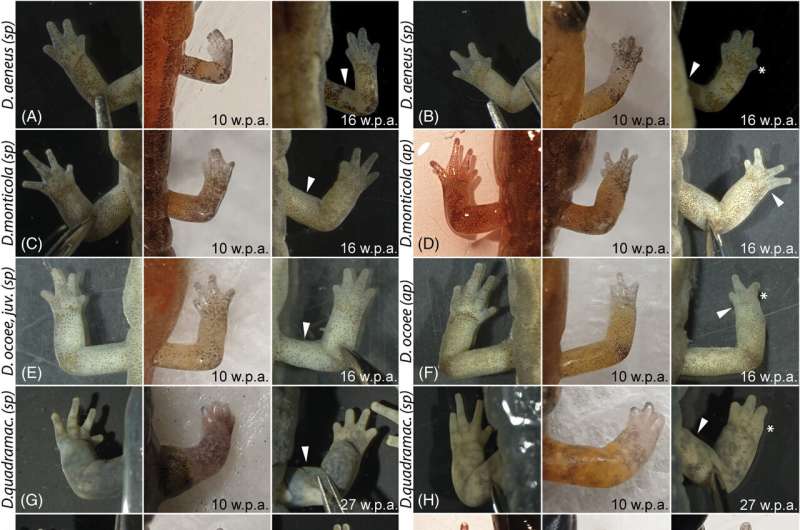
by Museum für Naturkunde – Leibniz-Institut für Evolutions- und Biodiversitätsforschung

Salamanders are the only terrestrial vertebrates that possess the remarkable ability to regenerate limbs or tails. The vast majority of research on vertebrate regeneration is based on the axolotl and has provided great insights on regenerative mechanisms. But how does regeneration proceed in other salamanders with different ecologies and life strategies, and which features are shared or variable?
A study by scientists at the Museum für Naturkunde Berlin, recently published in the journal Developmental Dynamics, could show that data from other salamander species with different life history patterns and habitats is essential for advancing regeneration research in vertebrates.
The axolotl (Ambystoma mexicanum), a salamander native to Mexico, is known for its impressive ability to repeatedly regenerate injured or lost organs and body parts, including parts of the brain, eye, spine, and heart, as well as parts of the tail and complete limbs.
The field of regeneration biology is trying to uncover the mechanisms underlying this amazing capacity and for that the axolotl has become the vertebrate model organism over the past hundred years.
However, as a so-called neotenic salamander, the axolotl is quite special in that it spends its entire life in the water while retaining a number of typical larval characteristics such as external gills and a paddle-shaped tail even as a mature adult.
As the majority of research on regeneration in vertebrates is based on the axolotl, it remains largely unknown how much variation in regeneration processes might exist between the more than 800 species of salamanders and particularly how limb regeneration varies across salamanders and how factors like different life history strategies, ecologies, and limb functions have influenced and shaped regenerative capacities throughout evolution.
For this reason, Vivien Bothe and Nadia Fröbisch from the Museum für Naturkunde Berlin, Hendrik Müller from the Martin Luther University Halle-Wittenberg and Neil Shubin from the University of Chicago focused their regeneration research on the salamander family of Pelthodontidae, which is characterized by its high diversity in body forms and lifestyles.
For their study, they collected six different species in the Appalachian Mountains in North Carolina (U.S.) and examined them with regard to their regenerative abilities.
“Bite injuries caused by predators or even conspecifics are common in the wild. During our field work, we regularly encountered salamanders with wounded limbs or tails,” reports Bothe. The long-term observations and laboratory experiments for this study showed that all of the investigated species are able to heal such injuries and regenerate lost body appendages. The aspect of investigating regeneration in the field plays a major role in this project.
“Among other things, our work aims to highlight the importance of understanding that regeneration experiments that take place in the laboratory under controlled conditions and regeneration processes in the natural environment differ from each other in important aspects. This can be seen, for example, in the fact that regeneration after bite injuries results in more frequent and more severe malformations than clean amputations,” adds Bothe.
Furthermore, based on anatomical and histological data of regenerated limbs, the researchers discovered that there appears to be a correlation between the speed of regeneration and the salamanders’ habitat. For example, rock-climbing species that rely heavily on their limbs for climbing, regenerate faster than species that live on the forest floor or spend most of their time in the water.
“We are now at a point in the research on vertebrate regeneration at which we should complement the great insight we have gained and continue to gain from the model organism axolotl with insights from other salamander species.
“Salamanders have a great diversity of lifestyles and inhabit vastly different habitats. Only an inclusion of this diversity in regeneration research will allow us to disentangle the shared mechanisms of regeneration from those that are specific to certain species and lifestyles,” says Fröbisch.
The results of the study provide valuable insights into regeneration and show that the inclusion of non-model organisms and the natural and evolutionary context of regeneration in this field of research can significantly advance regeneration research in the future.
More information:
Vivien Bothe et al, Effects of life history strategies and habitats on limb regeneration in plethodontid salamanders, Developmental Dynamics (2024). DOI: 10.1002/dvdy.742. anatomypubs.onlinelibrary.wile … doi/10.1002/dvdy.742
Provided by
Museum für Naturkunde – Leibniz-Institut für Evolutions- und Biodiversitätsforschung
Citation:
How life strategies and habitats influence the regenerative capacities of salamanders (2024, October 28)
retrieved 28 October 2024
from https://phys.org/news/2024-10-life-strategies-habitats-regenerative-capacities.html
This document is subject to copyright. Apart from any fair dealing for the purpose of private study or research, no
part may be reproduced without the written permission. The content is provided for information purposes only.